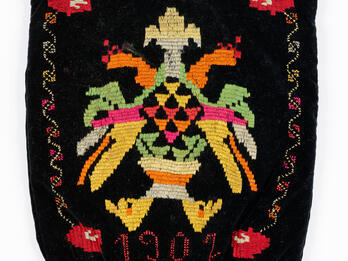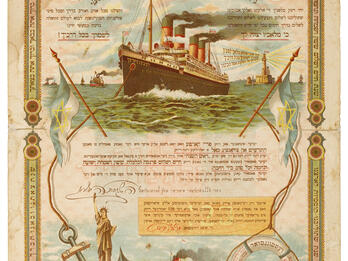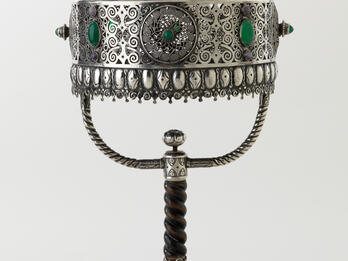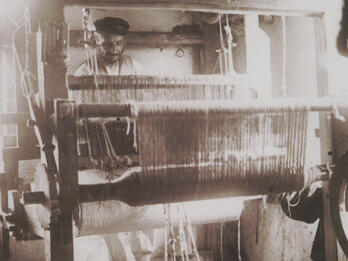Publisher's Stamp
Joseph Knebel
1909
Credits
Published in: The Posen Library of Jewish Culture and Civilization, vol. 7.
You may also like

Tefillin Bag of Leib Millman

Leshone-toyve shifskarte (Jewish New Year's Card in the Form of an Ocean Liner Ticket)

Cover Illustrations for Peretz's Dramen

To the Majesty and Glory of Baron Hirsch (Lithograph)

Table Lamp with Elaborate Silver Lampshade

Tallis Weaver
Places:
Creator Bio
Joseph Knebel
Born to an assimilated family in Buczacz, Habsburg Galicia (today Buchach, Ukraine), Joseph Knebel lived in Vienna for a time before moving to Moscow in 1880, where he became a book dealer, and eventually a prominent publisher of art books, children’s literature, and publications intended to improve art education for children. By the early twentieth century, Knebel (who came to be known by a Russified version of his name, Osip or Iosif Nicholaevich Knebel) had established himself in Moscow’s artistic and scholarly community, befriending many artists and writers, among them Leo Tolstoy. After the Bolshevik Revolution, the Soviet government appropriated Knebel’s publishing house. Knebel is most known for his Podarochnaia seriia (Gift Series, 1906–1918), a collection of lavishly illustrated children’s books.
You may also like

Tefillin Bag of Leib Millman

Leshone-toyve shifskarte (Jewish New Year's Card in the Form of an Ocean Liner Ticket)

Cover Illustrations for Peretz's Dramen

To the Majesty and Glory of Baron Hirsch (Lithograph)

Table Lamp with Elaborate Silver Lampshade



